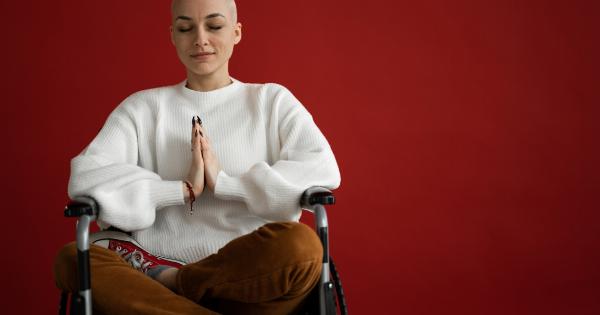Epilepsy, also known as seizure disorder, affects approximately 50 million people worldwide. It is a neurological disorder that causes abnormal electrical activity in the brain, leading to seizures.
Seizures can range from mild to severe, and it can happen to anyone at any time. If you witness someone having a seizure, it can be a frightening experience, but knowing how to respond can make all the difference.
What Causes Epilepsy?
Epilepsy is caused by a disruption in the normal activity of the brain’s nerve cells. This disruption can be due to a variety of factors, including:.
- Brain infection or injury
- Stroke
- Brain tumors
- Genetic factors
- Drug or alcohol abuse
- Abnormal levels of electrolytes in the blood
Types of Seizures
There are several types of seizures, and each has its unique set of symptoms:.
- Generalized-onset seizures: The seizures affect both sides of the brain simultaneously. They can cause loss of consciousness, muscle rigidity, and convulsions.
- Focal seizures: The seizures occur in one area of the brain. They can cause changes in consciousness, sensory disturbances, and repetitive movements.
- Absence seizures: The seizures cause a brief loss of consciousness and staring.
- Myoclonic seizures: The seizures cause sudden brief jerks of the arms and legs.
- Tonic-clonic seizures: The seizures cause a loss of consciousness, muscle convulsions, and sometimes bladder or bowel incontinence.
What to Do During a Seizure
If you witness someone having a seizure, it’s important to remain calm and take the following steps:.
- Time the seizure: Note the time the seizure starts and how long it lasts. This information can help medical professionals determine the appropriate treatment.
- Protect the person’s head: Place something soft, like a pillow or cushion, under the person’s head to help prevent injuries.
- Clear the area: Move any objects that could be harmful to the person, such as sharp objects or furniture.
- Loosen tight clothing: Remove any tight clothing, like a necktie or scarf, that could restrict breathing.
- Do not restrain the person: Do not restrain the person’s movements during the seizure. Instead, let the seizure run its course.
- Tilt the person’s head to the side: This will help prevent choking if the person vomits during the seizure.
- Stay with the person: Remain with the person until the seizure is over and help them to a comfortable position.
What to Do After a Seizure
After a seizure, the person may be confused, disoriented, or sleepy. It’s important to:.
- Reassure the person: Offer reassurance and comfort to the person.
- Stay with the person: Remain with the person until they have fully recovered and are back to their normal state.
- Offer water or juice: Offer the person water or fruit juice to help hydrate and replenish nutrients.
- Do not offer food: Do not offer food until the person’s condition has been evaluated by a medical professional.
- Call for medical assistance: If the person has never had a seizure before, if the seizure lasts longer than five minutes, if the person is injured during the seizure, or if the person has difficulty breathing after the seizure, call for medical assistance immediately.
What to Do if Someone Has Epilepsy
If someone in your life has epilepsy, it is important to be prepared in case of a seizure. Here are some steps to take:.
- Learn about epilepsy: Educate yourself about epilepsy, including the different types of seizures, their causes, and treatment options.
- Be prepared: Keep a list of emergency contacts and pertinent medical information with you at all times.
- Keep an eye on medications: Check to make sure the person is taking their medications as prescribed and has a sufficient supply.
- Talk to the person’s doctor: Talk to the person’s healthcare provider about any concerns or questions you have regarding their condition, treatment, or seizure management.
Conclusion
Witnessing a seizure can be a scary experience, but knowing how to respond can make all the difference.
If you witness someone having a seizure, remain calm, time the seizure, protect the person’s head, clear the area, loosen tight clothing, do not restrain the person, tilt the person’s head to the side, and stay with the person until it’s over. If someone in your life has epilepsy, it’s important to be prepared, educate yourself about their condition, and take steps to ensure their safety.






























